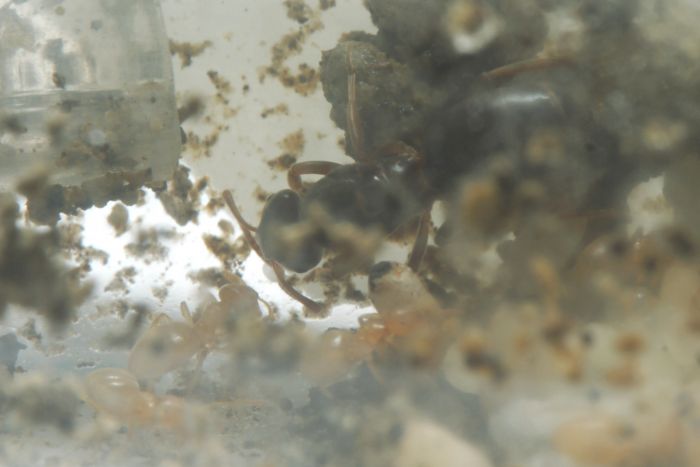I have a few new queens this year that I am yet to share about, and I figured it's as good a time as any to start a little journal, as a collective of my photographs and videos. I still need to knock the cobwebs off my macro photography setup which, cumbersome as it is, has nabbed me some pretty decent images in the past. My camcorder is many times more convenient. ![]()
For macro, I use lens coupling of vintage lenses from Minolta on a Canon HF S200's fixed zoom lens and a Helios 44 on my Sony A700's Minolta mini-beercan. I have a small LED array for videos and a Frankenstein('s monster)esque flash setup for photography. None of this stuff is really optimized.
So first up Is Camponotus pennsylvanicus. I originally had C. novaeboracensis as well, but she fell prey to parasitic flies and croaked a couple days after capture. The maggots have since pupated and I should have some footage of the flies when they emerge. C. pennsylvanicus has more than the four or five larvae I am used to seeing them raise into the nanitic stage. It will be interesting if she decides to keep all of them. In the video, she is doing something to the egg -- either eating it/making it easier for a larva to eat or removing some kind of membrane from a 1st instar larva. I'm inclined to believe it is the latter. In another clip I haven't published, she has quite a bit of difficulty getting the membrane off of her right mandible (but succeeds eventually, haha.) I've had her for 22 days, and have kept part of the tube on a very small heating pad.
I found this Tetramorium queen in the road, being harassed by workers of the same species. Somewhere along her way, she seems to have lost her left antenna. She was collected at the same time as C. novaeboracnsis, which was one or two days after my other Camponotus queen (I should have written it down. Always write the dates, times, and locations down, people!) I really like Tetramorium, and hope to give them a permeable nest someday soon. In this clip, the queen doesn't do much, but you can see her carefully checking the nearby eggs.
I've wanted to get another Lasius umbratus queen since I lost my first-ever colony two winters ago. This first queen was caught on May 31st in a small forest park. I introduced her, under normal conditions, to eight wild-caught, in-nest Cautolasius (L. nearcticus or L. flavus) from the same location. She killed all but two workers, which was a little excessive if you ask me. They haven't moved out of their gross tube, so I could only film through the opening.
This next queen was caught four days ago. I wasn't sure how Lasius umbratus would do founding a colony with only two workers (which haven't been responding to the Lasius alienus pupae I've had on hand to give them.) This second queen was offered somewhere around 20 workers with up to 30 larvae, two days after capture. She killed two workers which were clinging to her leg and antenna, then spent a day in a separate tube with their bodies. Two more workers panicked and ran out of their tubes, but didn't seem to be able to find their way back before dying (this host might be delicate). When I came home from work tonight, she was amongst the workers. Please disregard the audio capture of my breathing, haha:
Edited by Batspiderfish, June 19 2016 - 9:54 AM.

















